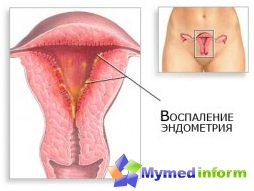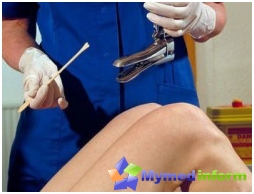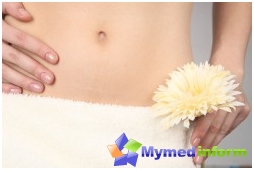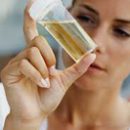Pathology is manifested by strong inflammation affecting the mucous layer of the inner walls of the uterus (endometrium). Very often the inflammatory process applies to the muscles of the organ (then they talk about the metroendometritis).
The form and structure of the endometrium at different stages of the menstrual cycle constantly changing. The fabric of the mucous membrane is regularly updated, prepared for a possible fertilization. If the fusion of the egg and spermatozoa does not occur, the endometrium is brazed. A healthy mucous membrane serves as a protective barrier between the uterus and infection, which penetrates the organ from the outside. When in the immune barrier of the body appears «Bresh», The pathogens of various diseases penetrate the uterus, provoking the development of inflammation.
According to the specifics of the flow, the disease may be acute and chronic.
Acute Endometritis: Features of its development and signs

The reasons for the acute form of pathology are as follows:
- Hysteroscopic examination of the uterus;
- Operational scraping of the uterine cavity;
- independent delivery and operation of the cesarean section;
- mini Abortion;
- Unsuccessful interruption of pregnancy, after which parts of a fetal egg or placenta remain in the uterine cavity;
- Improving the sensitivity of the female organism to various pathogenic microorganisms on the soil of weakened immunity.
By origin, endometrite can be specific and nonspecific.
Specific disease may have infectious and parasitic nature. Endometritis infectious pathogens spectrum is very wide: viruses Toxoplasma, Simple Herpes, Mycoplasma, Gonococci, Candida, Chlamydia, Tuberculosis Mycobacteria and Other.
Nonspecific endometritis begins on the background of healthy microflora in the uterus. It can be caused by bacterial vaginosis, HIV infection, intrauterine spiral and reception of hormonal contraceptives.
Acute endometrite develops in 2-3 days after the penetration of infection in the body. The following symptoms testify about the disease:
- heat that alternate with chills;
- Strong lower abdominal pain;
- Allocations from the vagina with an unpleasant odor;
- painful sensations during urination;
- rapid pulse.
The result of inspection on the gynecological chair becomes increased sizes of the uterus, its high sensitivity, succinous or purulent discharge. The disease retains an acute form to 7-10 days. In case of untimely treatment, the endometrite acquires a chronic form.
Chronic endometritis: specificity of the disease and symptoms

The main conditions for successful overcoming the disease are stationary stay in the hospital, complete peace and balanced nutrition.
The main emphasis in therapeutic events with acute endometritis doctors make Antibacterial drugs. Mostly, treatment is based on the use of amoxicillin, kanamycin, gentamicin, ampicillin, lincomycin, etc. If the disease caused a mixed bacterial infection, the combined treatment of several antibacterial drugs is effective in this case. When anaerobic infectious inflammation is joined to an inflammatory response, drugs with active metronidazole substance are connected. To reduce pain and stop bleeding to the stomach for 2 hours (with a 30-minute break) applied cold.
In addition, complex therapy is complemented by antiallergic and antifungal drugs, polyvitamins, probiotics and immunomodulators. After the intensity of the symptoms of the disease will be reduced, the main treatment is complemented by physiotherapeutic procedures.
Treatment of chronic form of the disease
When there is a sluggish endometrite, the treatment is directed to suppressing the activity of pathogens, and after - to restore the damaged infection of the uterine mucous membrane. As with acute endometritis, in the process of treating chronic disease, the main rate is made on antibiotics (for example, doxycycline, amoxicillin, etc.). The rehabilitation course is based on a hormonal (divigel, uremines) and metabolic treatment (Actovegin, Riboxin, Vitamins C and E).
Special attention in the treatment of chronic endometritis is given Physiotherapy. Among the procedures is greater relevance Electrophoresis and impulse ultrasound therapy. Thanks to these events, the edema of the endometrium is eliminated, normalizes circulation and immunological reactions are stimulated.
How to cure endometrite people

Our site reminds that the main treatment of the disease must be entrusted with the doctor, and seek help Folk Medicine can only with his consent!
To weaken the painful symptoms of acute endometritis, it is recommended to use the predictions of therapeutic herbs for douching. For this purpose, the root of Althea of the Medicinal, Bark Oak and Grass Cuffs. These plants have powerful anti-inflammatory and painkillers. Mix equal proportions of raw materials, then grind it. 1 Art. L. Herbal Mass Fill 200 ml of steep boiling water, then hold the remedy for slow heat for a quarter of an hour. Finished medicine insist for an hour, after which it strain.
To pay off inflammation in chronic endometritis, use the baths (10-15 min) prepared from medicinal herbs. Treatment Long-term - therapeutic effect manifests itself after 4 weeks.
For the preparation of the medicine, you will need 50 g:
- birch leaves;
- Leaves nettle;
- Mety-and-stepmother leaves;
- juniper fruits;
- cherry fruits;
- fruit of coriander.
Mix all plants and fill 6 st. L. Calculation 2L boiling water. Put the remedy for slow fire for 15 minutes. After that, leave the drug infusion in a warm place at night.
Prevention of the disease

To prevent the development of the inflammatory process in the uterus, a woman should listen to the following recommendations:
- Ensure the perfect purity of the vagina, especially during menstruation.
- Use any convenient tool during sex to prevent unwanted pregnancy and, accordingly, abortion.
- On time to eliminate all infectious diseases of the reproductive system.
- Pass the course of regenerative therapy after natural genera or Cesarean section.
- Enhance common immunity by any available and known ways.
- Twice a year to visit the gynecologist for preventive inspection.









